Is Evan Kinori Menswear’s Favorite Cult Designer?
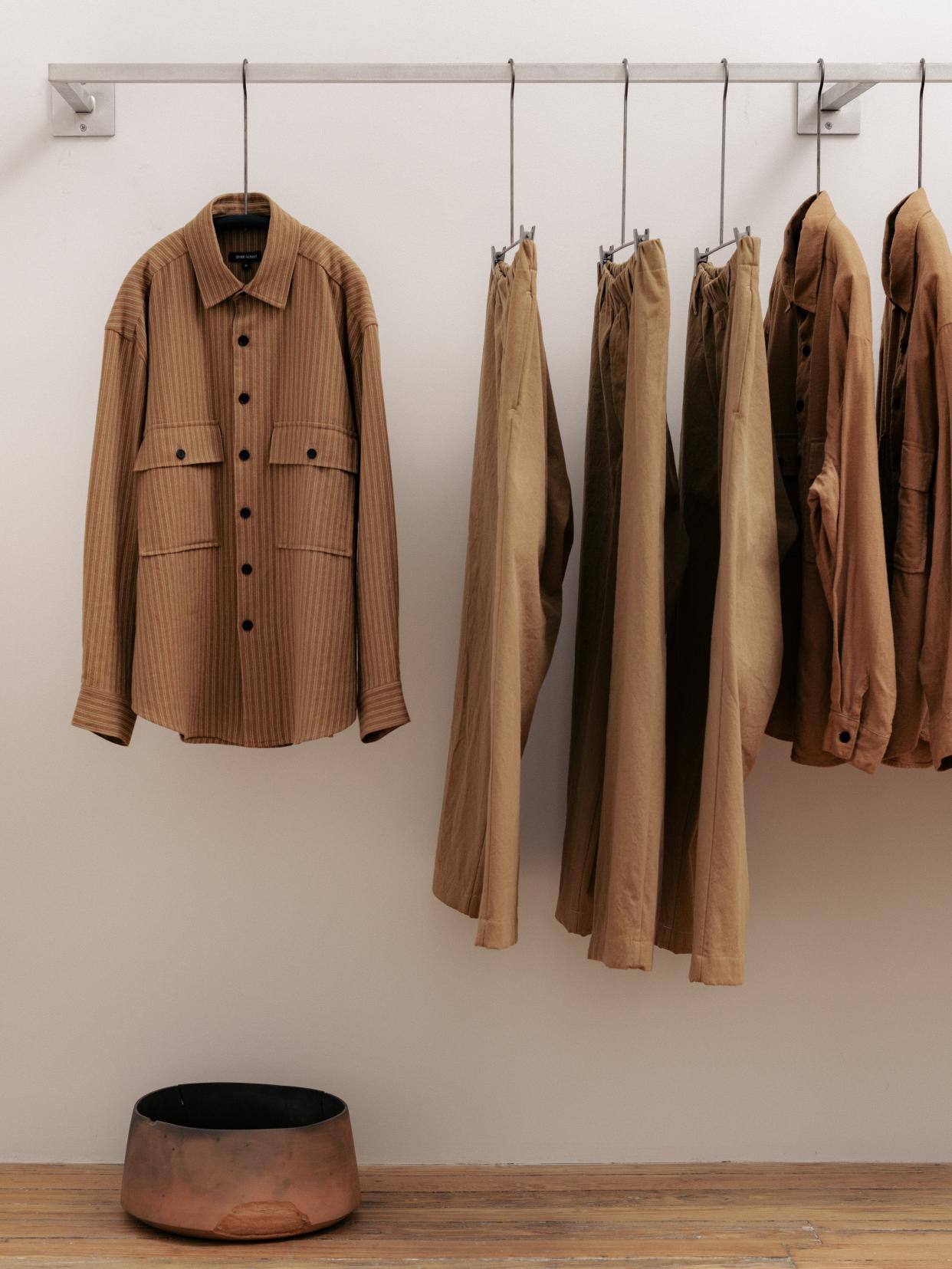
Courtesy of Ulysses Ortega
This is an edition of the newsletter Show Notes, in which Samuel Hine reports from the front row of the global fashion week circuit. Sign up here to get it in your inbox.
On Friday, the San Francisco-based menswear designer Evan Kinori opened an exhibition at a white-walled gallery in Tribeca. Titled “apple, elm & cotton,” the show features Kinori’s debut furniture line and a new collection of organic cotton clothing. Kinori’s work is tranquil; his lived-in shirts and trousers conjure misty Northern California mornings, his simple furniture appears destined for thoughtful evenings at home.
The opening party, on the other hand, was popping.
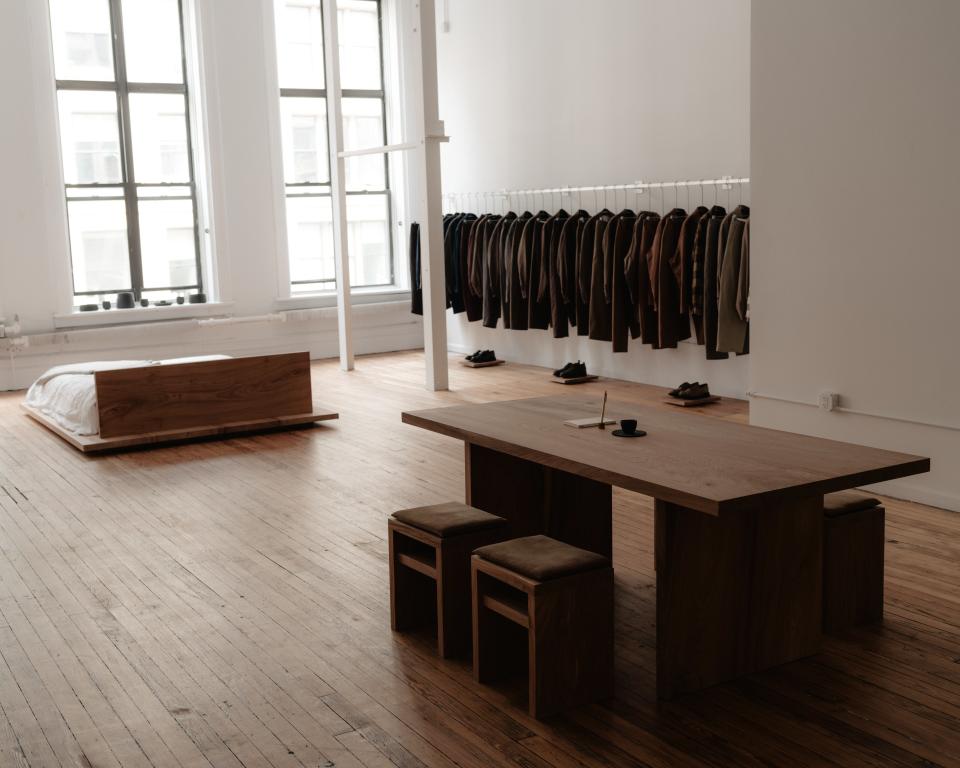
Shortly after the 6:00 pm start time, JDJ gallery was packed with local artists and gallerists, in-demand graphic designers, elite podcasters, about a dozen fashion editors, and numerous Kinori clients, all of whom sipped on small-batch hard cider Kinori made for the occasion with upstate New York’s Occam Ciders. Even more tumbled linen-clad Kinori fans spilled out on the sidewalk. It was the kind of room that many fashion brands pay good money to replicate, though since Kinori doesn’t do much in the way of marketing, it came together largely through word-of-mouth.
“Oh, cool,” said Kinori, dressed in shades of beige, when I told him that many, many people had texted me about the gathering. “I really didn’t know what to expect.”
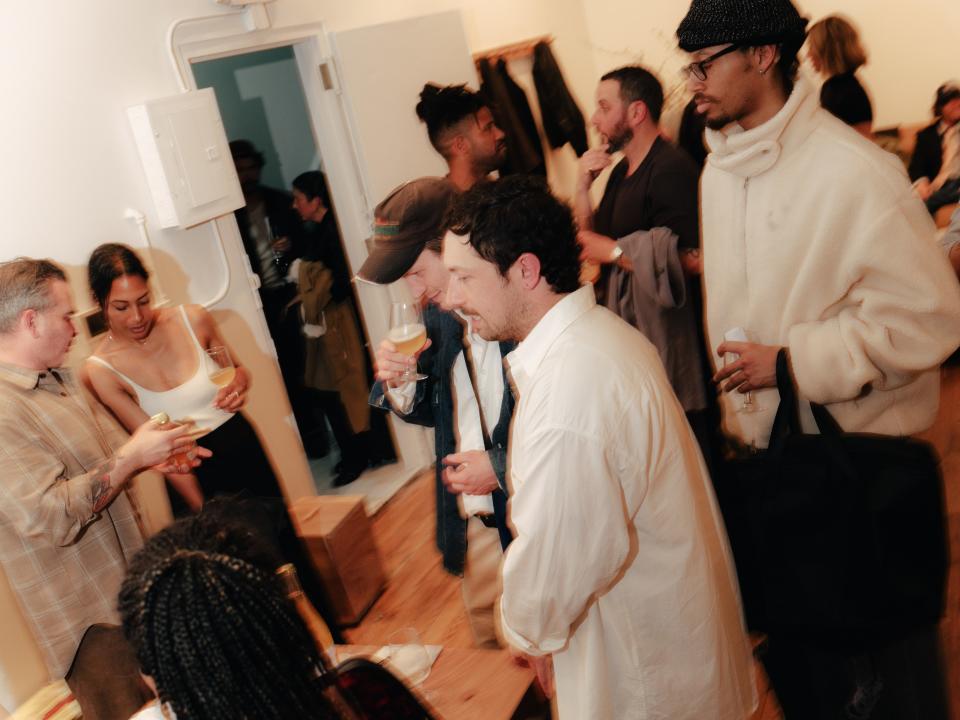
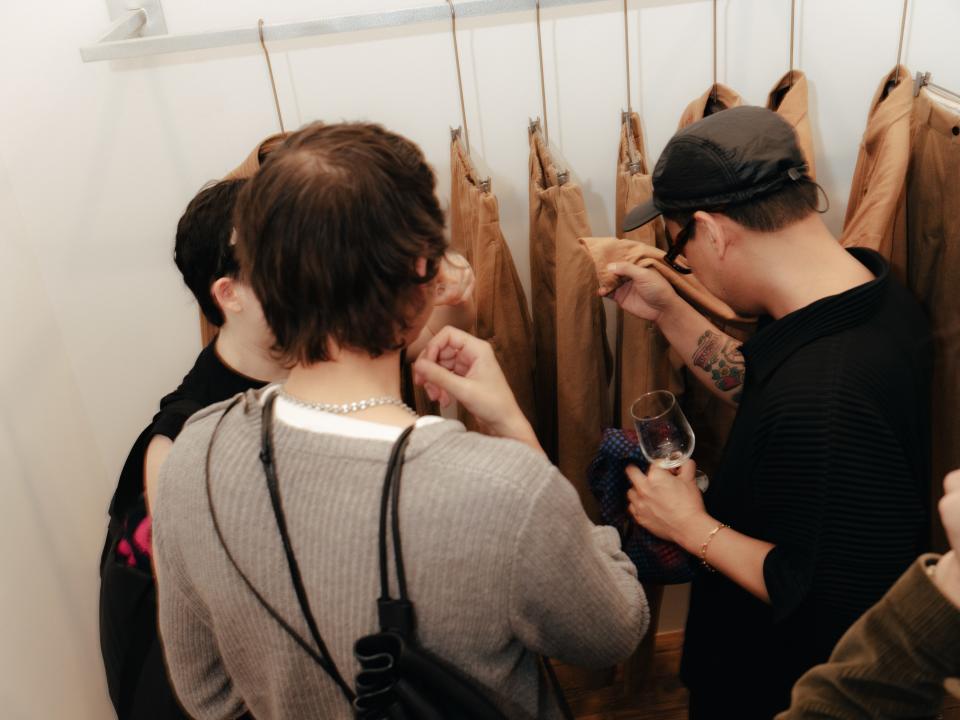
Kinori speaks quietly but quickly. The 35-year-old is hyper-meticulous, a characteristic honed by a life of skateboarding and about a decade of making clothing slowly and deliberately, to the highest possible standards. His methodically-crafted shirts and jackets and trousers are simple and unfussy, and made in miniscule quantities with rare cottons, linens, and wools.
Like any cult designer (Rick Owens and Kiko Kostadinov also come to mind), Kinori’s work can seem slightly intimidating to the outsider. It’s once you’re inside his airtight aesthetic universe that you discover there’s no limit to how deep you can go. But Kinori is also a nice guy and his clothes are fundamentally unpretentious looking, even if they belong on an elite artisanal tier. At any rate, he was hosting the fashion hang on this Friday night in NYC, even if he did seem vaguely bashful about how many people were dapping him up as they arrived.
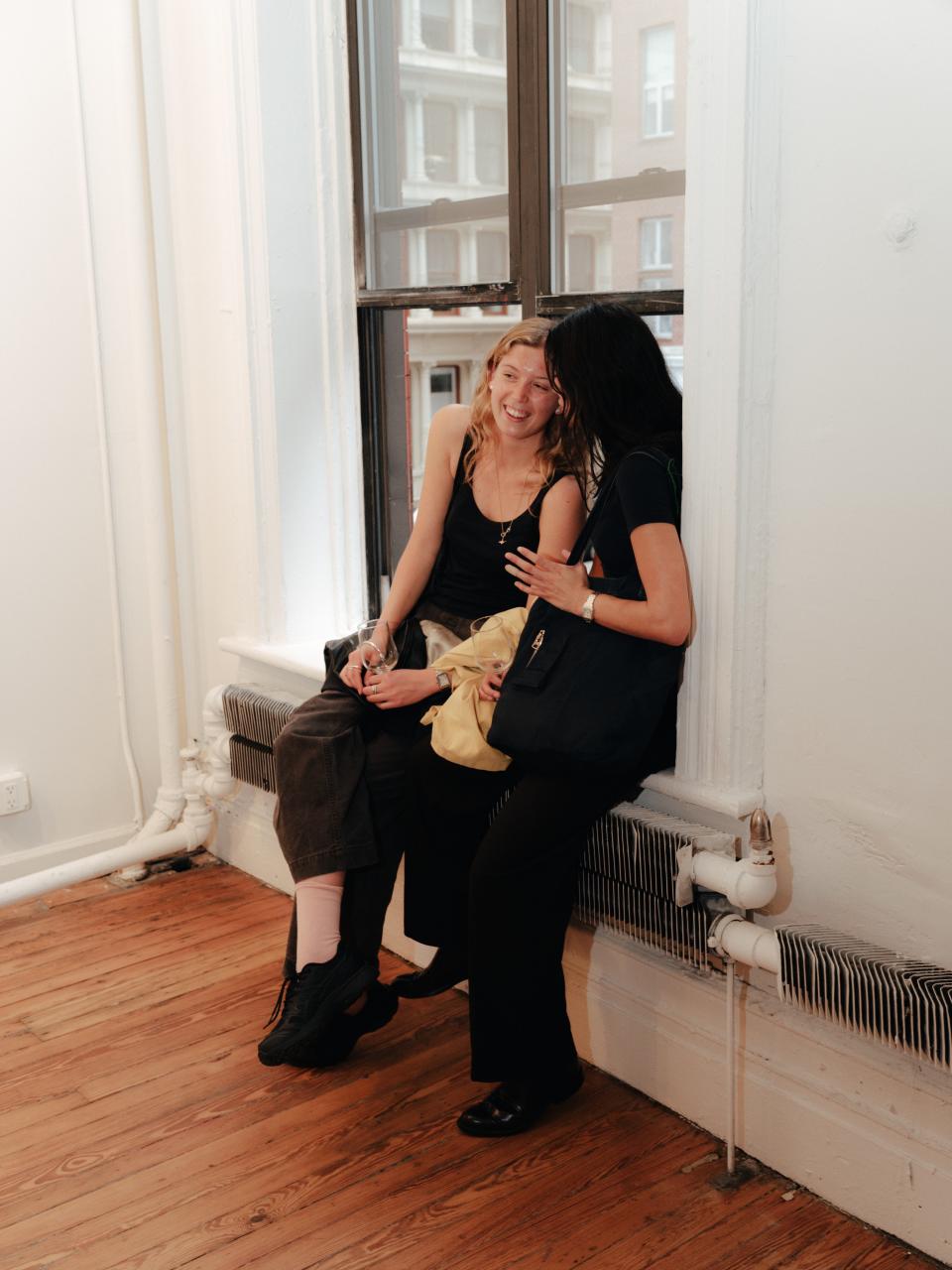
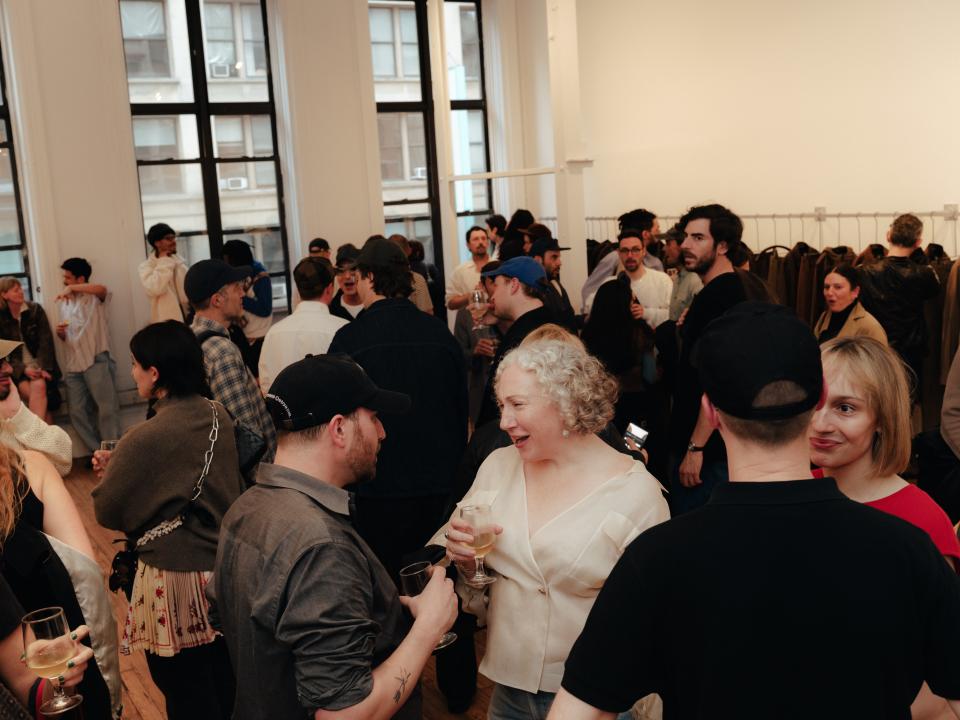
If you look at it one way, the Kinori hype train is thanks to his steady hand that defies a fast industry. But I think we might actually be living in a world made by people like Kinori, not the other way around. Right now, cult designers feel like the crucial batteries that keep energy flowing through the rest of the fashion system. As the fashion mega-groups report their quarterly earnings, the headlines in Business of Fashion and WWD read like dire portents of a coming fashion reckoning as consumer spending cools on mass luxury. But there is no shortage of loyalty and dedication—and spending—on the niche end of the industry, which feels more powerful than ever before.
Evan Kinori is still a minnow to LVMH and Kering’s sharks. The more important point is that there is something incredibly galvanizing about watching independent designers build something totally uncompromising. And I would argue that they occupy a critical position in the fashion universe. Fashion needs tough, ambitious designers to keep the creative blood flowing, designers who aren’t afraid to explore new ideas with their hardcore audience. Designers who, in turn, teach their audience to think of themselves more like connoisseurs or collectors than mere shoppers.
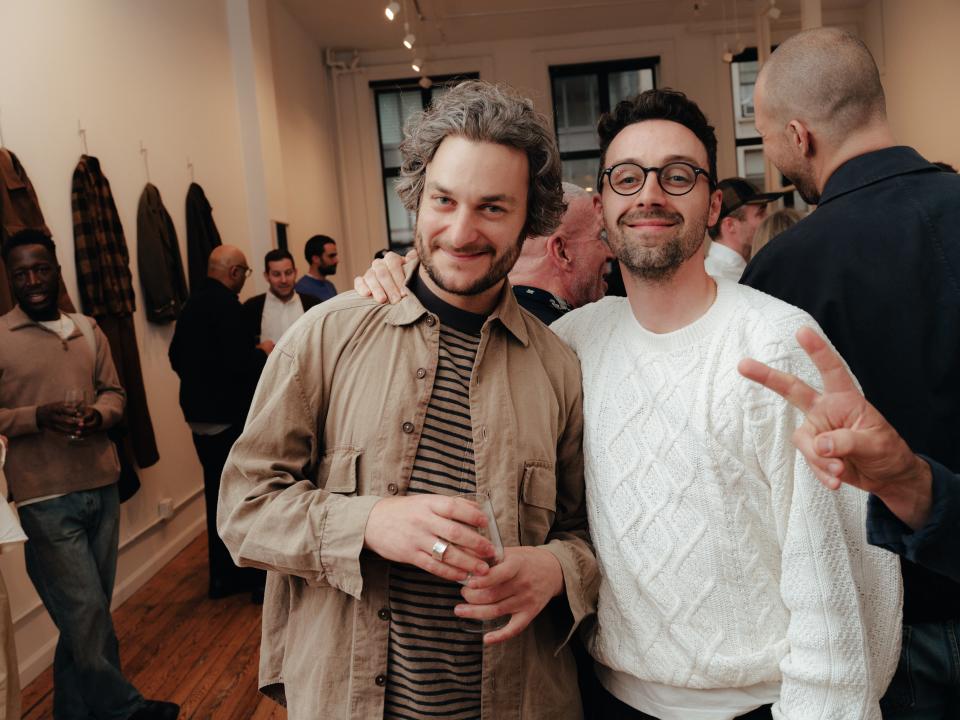
Like any good cult gathering, there was a uniform at JDJ on Friday night. “You should have a brown iPhone,” one editor told a Kinori fan who was decked out in the brand’s signature earthen tones. Kinori, who periodically flipped records on a vintage Braun turntable, has had a particularly big month. There’s the exhibition, the first pop-up retail project he’s done outside of his own store in SF. The furniture. The apple cider, which was as dry as a crisp French white. And there was his Met Gala debut courtesy of GQ bossman Will Welch, who fielded questions about his Kinori-designed bespoke sumi-ink velvet tuxedo all evening.
Kinori, of course, waved off any praise of his red carpet debut. “When Will came to me I was like, Are you sure you want me to do this? I've never worn a tux. I don't know anything about it.”
Kinori might only have a few employees, but his name connotes an idea of a lifestyle that’s as clear as any brand. Hence the furniture. The slightly counterintuitive reality of Kinori’s position as the pied piper of locavore menswear is that he can take on ambitious projects that designers of brands ten times his size might not. As I discovered at Salone del Mobile, furniture is a tricky space for fashion brands, who face steep costs to develop furniture production and distribution, and a competitive market filled with more established design names. For a nimble operation like Kinori’s, though, furniture is simply an intuitive development of his practice.
“I'm making what I like or what I'm interested in, and I’m hoping that maybe somebody else will like it, too,” he said. His first offering, which includes a simple, Judd-like couch, coffee table, bookshelf, stool, and bedframe, is made-to-order north of his SF home base using sustainably salvaged native woods like elm, redwood, and cypress. The furniture, Kinori told me, is “Is the same language” as the clothes. “It’s material proportion, scale, form. It’s using the same tools in my toolbox, the same way of expressing ideas.”
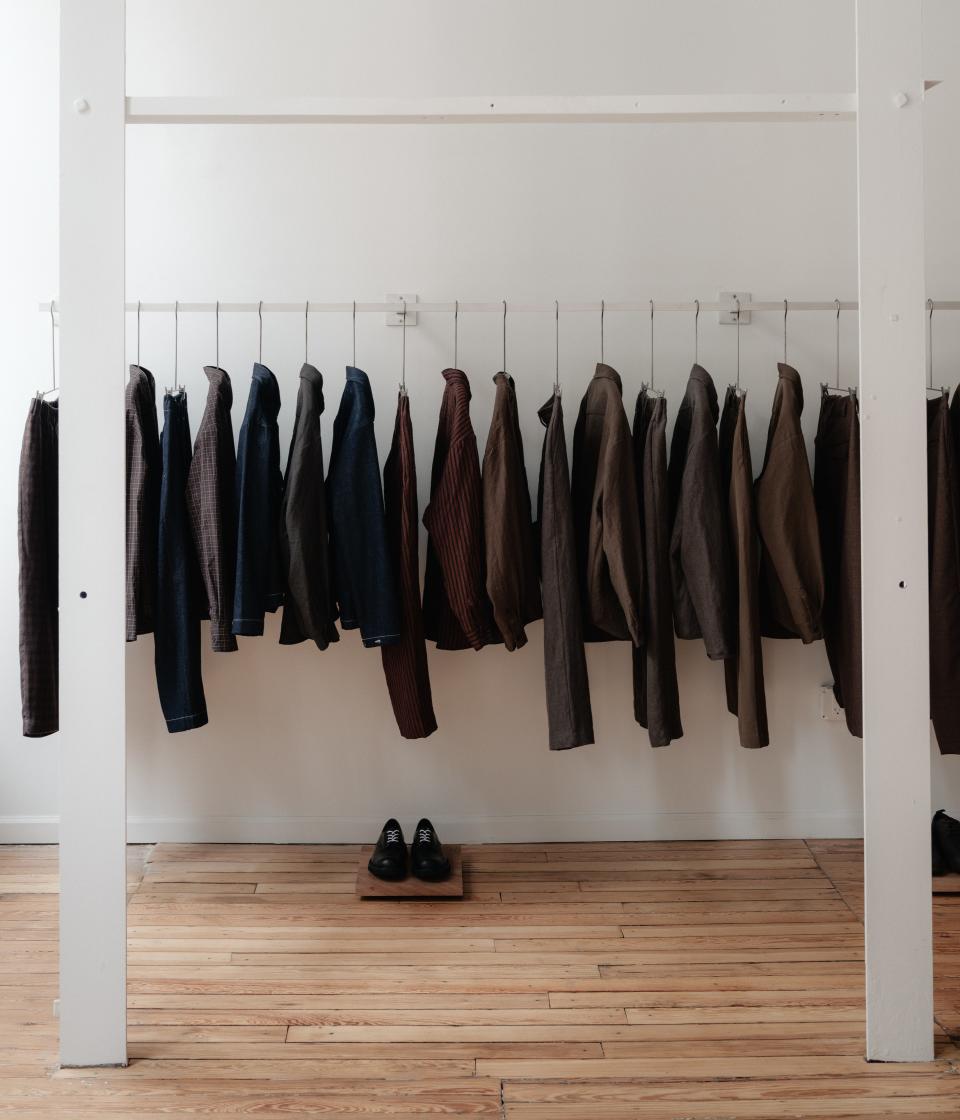
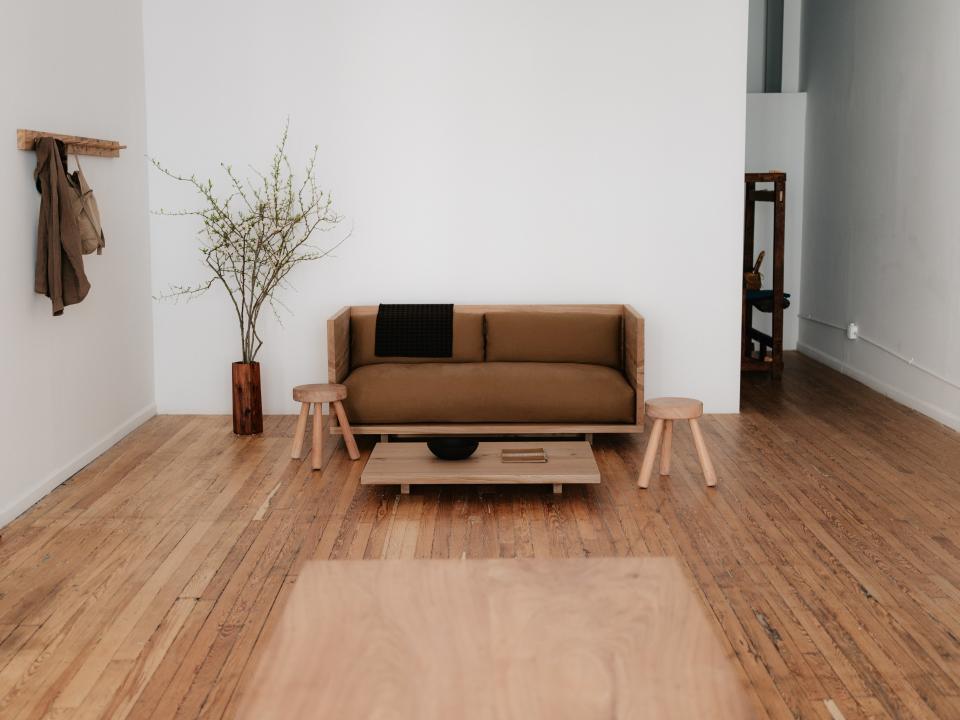
As for distribution, he doesn’t need to make inroads into the interior designer world, because his customers come directly to him. Which explains why Rick Owens, the godfather of contemporary indie fashion starts, has had a thriving furniture business since 2007. Kiko Kostadinov, another figure of obsession, sells furniture, the merch-y line Otto 958 out of Los Angeles art gallery Morán Morán, oversees an ASICS collection, and also has a legitimate fine art practice. All of which makes the world around his main collection feel that much more intriguing—and give him an edge for recruiting new members into the Kiko universe.
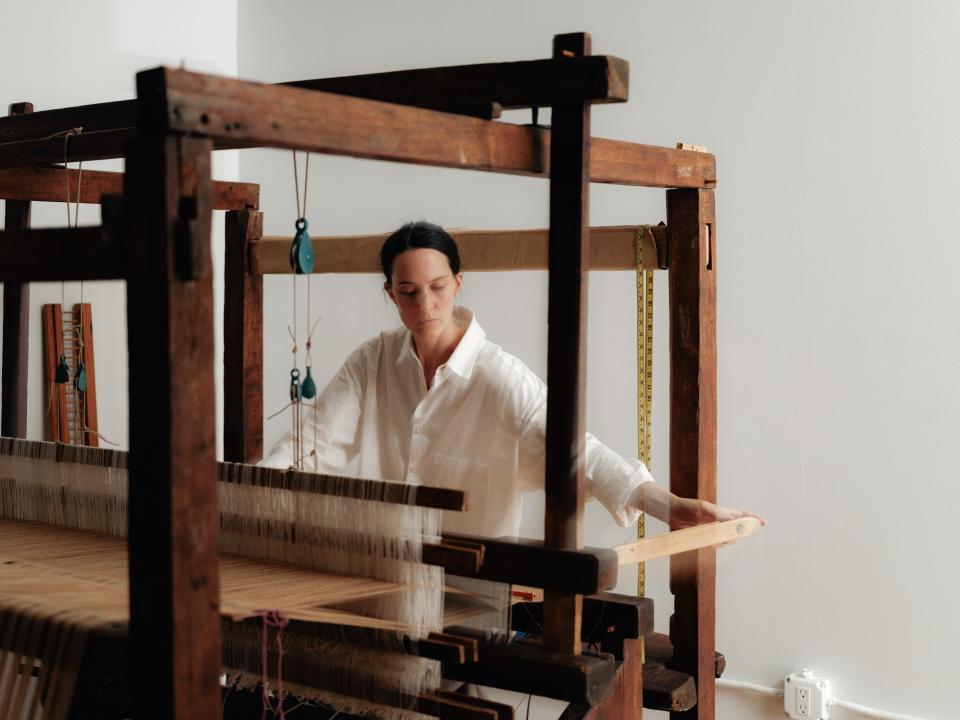
In the back of the gallery, I found signs of another project only Kinori could do. For the exhibition, he brought a large wooden handloom from San Francisco. For the next ten days, the artist and handweaver Marina Contro would be at the loom weaving cones of undyed organic cotton developed by noted cotton breeder Sally Fox into fabric, which Kinori would then use to make a shirt. Not just any shirt, but one that gets about as close to perfection in Kinori’s eyes as possible, a shirt that collapses the distance between source and production and customer to basically nothing. To Kinori, that’s real luxury, and it’s priced accordingly. One shirt was made in advance of the event at Kinori’s SF studio. A second one is being made at the gallery this week. The shirt will run you $1,900. Which might seem crazy to the uninitiated. Even I wondered if anyone would buy one of the most expensive shirts I’ve ever heard of.
It turns out my question had already been answered. Earlier that day, Kinori had barely hung his shingle on Broadway when a customer arrived, popped on the one-of-one $1,900 shirt, and bought it on the spot. Such is the power of a cult designer.
The exhibition at JDJ Gallery runs through May 26 from 11:00 a.m. to 7:00 p.m. daily.
See all of our newsletters, including Show Notes, here.
Originally Appeared on GQ

